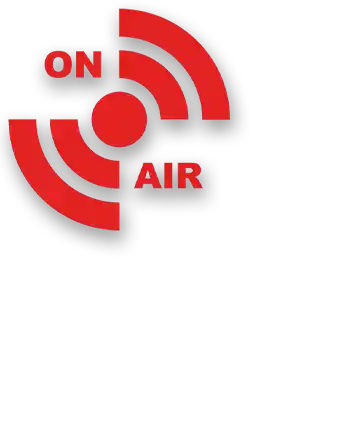Honoring the Voices of the Commute
Every morning, as we clutch our coffee mugs, brace for the honk-filled drive, and edge our way onto crowded highways, there’s one voice that keeps us company: the traffic broadcaster. Celebrated on November 2nd, National Broadcast Traffic Professionals Day shines a spotlight on the folks who give us the latest updates on road congestion, crashes, and alternate routes—all while keeping us informed, amused, and just a little bit saner during the daily grind. Let’s dive into the history, the quirks, and why these voices are the unsung heroes of the airwaves.
The History of Traffic Broadcasting
Traffic broadcasting began in the early days of radio when roadways were becoming busier, and there was a growing need to keep drivers informed about hazards and delays. Initially, broadcasters relied heavily on local police scanners and listener call-ins to relay accident information or construction alerts. It wasn’t particularly sophisticated, but it was a start—providing a few, precious minutes’ notice that could mean the difference between a smooth commute and a sudden roadblock.
By the 1950s and ’60s, as cars flooded the streets and cities expanded, traffic reporting became more structured. Radio stations began to develop dedicated segments just for traffic updates, and by the 1970s, some stations deployed helicopters with reporters who provided live updates from above. These “eye-in-the-sky” reports allowed broadcasters to see entire roadways at a glance, becoming a landmark innovation in traffic reporting and giving listeners real-time insight into traffic patterns for the first time.
The 1990s saw the rise of digital technology. Roadside cameras, computerized monitoring systems, and sensors embedded in major highways began feeding precise traffic data to broadcasters. Suddenly, it was possible to know exactly how fast cars were moving across a network of city streets and highways, which meant more accurate, minute-by-minute reporting.
 Today, traffic broadcasting combines data from GPS, apps, and even social media, transforming these broadcasters into real-time navigators and local experts. Their ability to blend technology with experience allows them to interpret complex data in ways that apps alone can’t match, keeping commuters informed with a mix of data, intuition, and, often, a dose of humor to make the morning drive a little smoother.
Today, traffic broadcasting combines data from GPS, apps, and even social media, transforming these broadcasters into real-time navigators and local experts. Their ability to blend technology with experience allows them to interpret complex data in ways that apps alone can’t match, keeping commuters informed with a mix of data, intuition, and, often, a dose of humor to make the morning drive a little smoother.
What Does a Traffic Broadcaster Really Do?
You might think that traffic broadcasters just sit in front of a mic and repeat the same phrases about congestion and road closures. In reality, it’s a high-stakes job that requires skill, speed, and a sense of humor. Here’s a peek into a typical day in the life of a traffic broadcaster:
- Data Collection: Each morning, traffic broadcasters analyze data from traffic apps, city departments, and live cameras. They need to know where the congestion is and where it’s heading.
- Interpretation: It’s not enough to say there’s a crash on the highway; broadcasters must understand and explain how it impacts each route.
- Adaptability: Traffic conditions change fast. Broadcasters stay alert for updates and jump on air as soon as there’s a new accident, construction zone, or road closure.
- Calming Influence: Keeping an upbeat tone is crucial—no one wants to start their morning with a stressed-out announcer. A traffic broadcaster needs to keep a cool, collected, and sometimes witty demeanor, even if the roads look like a parking lot.
Humor in the Middle of a Traffic Jam
Anyone who’s been on the receiving end of a long commute knows that a little humor can go a long way. Many traffic broadcasters lighten up their reports with humor, offering witty observations, playful jabs, and sometimes even quirky names for notorious stretches of road. When traffic looks like it’s headed nowhere, a clever broadcaster might slip in a classic one-liner like, “Well, the 405 is slower than a sloth on holiday.”
And some even take it further. Creative broadcasters have been known to invent fictional “traffic weather” (beware of bumper-to-bumper gridlock with a chance of honking) or “scenic detours” that are mostly for laughs. Some broadcasters have a knack for crafting “morning-traffic poetry,” while others are famous for their chuckle-worthy pet peeves about left-lane cruisers. It’s this humor that gives commuters a much-needed smile during the most challenging parts of their day.
Key Skills Every Traffic Broadcaster Must Have
Traffic broadcasters need more than a clear voice and basic road knowledge. Here are a few vital skills that help them stay sharp:
- Quick Thinking: When an accident suddenly shuts down a major route, traffic broadcasters need to improvise and suggest alternatives fast.
- Attention to Detail: When describing a complex intersection, getting the details right is everything. The last thing they want is for drivers to take the wrong exit!
- Empathy: It’s easy to tell drivers they’re stuck in a jam, but a good broadcaster shows empathy, acknowledging the stress of delays.
- Memory: Longtime broadcasters have a mental map of local roadways. They often remember intersections, detours, and notorious bottlenecks, making it easier to guide listeners through changes.
Fun Ways to Celebrate National Broadcast Traffic Professionals Day
Want to show some appreciation for traffic broadcasters? Here are a few fun ideas:
- Shout-Out on Social Media: Find your favorite local traffic broadcaster and give them a shout-out online! Share how they’ve helped you avoid gridlock or made your commute a little brighter.
- Turn Up the Radio: Tune in and listen a little more closely. Maybe they’ll surprise you with a hidden gem of humor or a clever pun about traffic.
- Create Your Own Traffic Report: Try your hand at a faux traffic report with friends or family—add in some over-the-top exaggerations and see who can sound the most like a professional!
- Send a Note of Thanks: If your area has a traffic broadcaster you rely on, send a message of thanks. It’s rare they hear back from listeners, so a simple “thank you” might make their day.
 With new technology constantly emerging, the role of the traffic broadcaster is evolving. While apps and GPS offer turn-by-turn updates, there’s something uniquely comforting about a real person behind the mic. Traffic broadcasters are beginning to incorporate social media, live video streams, and interactive segments where listeners can call in with traffic tips. The combination of real-time data and a human touch keeps traffic reporting fresh and, for many, far more trustworthy than an app alone.
With new technology constantly emerging, the role of the traffic broadcaster is evolving. While apps and GPS offer turn-by-turn updates, there’s something uniquely comforting about a real person behind the mic. Traffic broadcasters are beginning to incorporate social media, live video streams, and interactive segments where listeners can call in with traffic tips. The combination of real-time data and a human touch keeps traffic reporting fresh and, for many, far more trustworthy than an app alone.
So next time you’re stuck in a snarl, just remember: the voice on the radio is doing their best to guide you through the labyrinth of traffic. National Broadcast Traffic Professionals Day is the perfect time to appreciate the voice that makes your commute a little easier—and a lot more entertaining.
Please Share our Content






 Today, traffic broadcasting combines data from GPS, apps, and even social media, transforming these broadcasters into real-time navigators and local experts. Their ability to blend technology with experience allows them to interpret complex data in ways that apps alone can’t match, keeping commuters informed with a mix of data, intuition, and, often, a dose of humor to make the morning drive a little smoother.
Today, traffic broadcasting combines data from GPS, apps, and even social media, transforming these broadcasters into real-time navigators and local experts. Their ability to blend technology with experience allows them to interpret complex data in ways that apps alone can’t match, keeping commuters informed with a mix of data, intuition, and, often, a dose of humor to make the morning drive a little smoother. With new technology constantly emerging, the role of the traffic broadcaster is evolving. While apps and GPS offer turn-by-turn updates, there’s something uniquely comforting about a real person behind the mic. Traffic broadcasters are beginning to incorporate social media, live video streams, and interactive segments where listeners can call in with traffic tips. The combination of real-time data and a human touch keeps traffic reporting fresh and, for many, far more trustworthy than an app alone.
With new technology constantly emerging, the role of the traffic broadcaster is evolving. While apps and GPS offer turn-by-turn updates, there’s something uniquely comforting about a real person behind the mic. Traffic broadcasters are beginning to incorporate social media, live video streams, and interactive segments where listeners can call in with traffic tips. The combination of real-time data and a human touch keeps traffic reporting fresh and, for many, far more trustworthy than an app alone.








 "Sláinte!" is a traditional Irish expression used as a toast, equivalent to "Cheers!" in English.
"Sláinte!" is a traditional Irish expression used as a toast, equivalent to "Cheers!" in English.